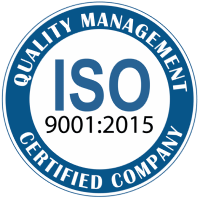Introduction to Aluminum
1.1 Basic Properties of Aluminum
Aluminum, a lightweight and versatile metal, boasts several key properties making it essential in various industries. Physically, aluminum exhibits a low density, approximately 2.7 g/cm³, which is about one-third that of steel, contributing to its widespread use in aerospace and automotive applications. Chemically, aluminum is highly reactive, yet it forms a protective oxide layer that enhances its corrosion resistance. Mechanically, it offers a good balance of strength and flexibility, making it suitable for structural applications.
Aluminum’s high thermal and electrical conductivity further enhances its utility in heat exchangers and electrical systems. Its mechanical properties include a tensile strength that can be significantly increased through alloying and heat treatment. These fundamental properties underscore aluminum’s adaptability and its critical role in modern engineering and manufacturing.
Reference:
1.2 Historical Context
Aluminum’s story began in the early 19th century when it was first isolated by Danish physicist Hans Christian Ørsted in 1825. However, it was not until Friedrich Wöhler refined Ørsted’s process in 1827 that aluminum became more accessible. Initially, aluminum was more precious than gold, finding limited use in jewelry and decorative items.
The Industrial Revolution marked a turning point for aluminum. The development of the Hall-Héroult process in 1886 by Charles Martin Hall and Paul Héroult revolutionized aluminum extraction, making it economically viable for widespread industrial use. This electrolytic process remains the primary method for aluminum production today.
Key pioneers such as Karl Bayer, who developed the Bayer process for refining bauxite into alumina in 1888, further advanced aluminum production. These innovations transformed aluminum from a laboratory curiosity to an industrial staple, critical in aerospace, automotive, and construction industries.
Reference:
![What is The Melting Point of Aluminum? [In Details] 1 Tilcon](https://tilcon.gr/wp-content/uploads/2024/06/aluminum-alloys-melting-4-300x103.jpg)
Melting Point and Influencing Factors
2.1 Definition and Significance
The melting point of aluminum is defined as the temperature at which it transitions from a solid to a liquid state, precisely at 660.3°C (1220.5°F). This property is fundamental in the field of material science, as it dictates aluminum’s performance under thermal stress and its suitability for various applications.
The significance of the melting point extends beyond its basic definition; it influences aluminum’s processing techniques, including casting, welding, and heat treatment. Thermal properties such as heat capacity and thermal expansion are directly related to the melting point, affecting how aluminum behaves under different temperatures.
Understanding the phase change from solid to liquid is crucial for industries that rely on aluminum’s unique properties. The thermodynamics involved in melting, including the enthalpy and entropy changes, provide insights into the energy requirements and stability of aluminum during thermal processes. This knowledge is essential for optimizing manufacturing and ensuring the quality and reliability of aluminum products.
Reference:
2.2 Measurement Methods
Accurately determining the melting point of aluminum involves sophisticated laboratory techniques that ensure precision and reliability. One of the most widely used methods is Differential Scanning Calorimetry (DSC), which measures the amount of heat required to raise the temperature of a sample. DSC provides precise thermal analysis by detecting endothermic and exothermic transitions, crucial for identifying the exact melting point.
Thermal analysis methods, such as thermogravimetric analysis (TGA) and differential thermal analysis (DTA), also play significant roles. These methods measure changes in physical and chemical properties as a function of temperature, providing comprehensive data on the melting behavior of aluminum.
Precision and accuracy in these measurements are paramount. Proper experimental setup, including well-calibrated instruments and controlled environmental conditions, ensures reliable results. Calibration involves using standard materials with known melting points to fine-tune the instruments, minimizing errors and improving measurement accuracy. These meticulous techniques are essential for validating the thermal properties of aluminum, ensuring its performance in critical applications.
Reference:
- Ehrenstein, G. W., & Pongratz, S. (2013). Thermal Analysis of Plastics: Theory and Practice. Hanser Publishers. This book, while focused on plastics, provides a thorough explanation of thermal analysis techniques applicable to metals like aluminum, offering insights into DSC and other measurement methods.
2.3 Alloy Composition
Alloying elements play a pivotal role in altering the melting point and overall properties of aluminum. Common alloying elements include copper, magnesium, silicon, and zinc, each contributing distinct characteristics to the aluminum alloy. For instance, adding copper enhances strength and hardness but can lower the melting point, while silicon improves castability and maintains a relatively high melting point.
The composition of an aluminum alloy directly impacts its melting behavior. Elements such as magnesium and zinc form solid solutions with aluminum, which can either elevate or depress the melting point depending on their concentrations. The modification of properties through alloying is crucial for tailoring aluminum to meet specific industrial needs, from aerospace to automotive applications.
The microstructure of aluminum alloys undergoes significant changes with the addition of alloying elements. These changes are depicted in phase diagrams, which illustrate the stability of different phases at various temperatures and compositions. Understanding these diagrams helps in predicting the melting behavior and optimizing the properties of aluminum alloys for diverse applications.
2.4 Environmental Conditions
The melting point of aluminum, typically 660.3°C (1220.5°F), can be influenced by various environmental conditions. Temperature variations are the most direct factor, where consistent high temperatures can alter the stability and transition points of aluminum phases. Additionally, changes in pressure can significantly impact the melting point. Under increased pressure, aluminum’s melting point can rise due to the additional force required to overcome the solid state’s structural integrity.
External factors, including the presence of other materials and atmospheric conditions, also play a crucial role. For example, the presence of certain gases can cause oxidation, which may influence the melting behavior. In experimental setups, maintaining controlled conditions is vital for obtaining accurate melting point measurements. This includes ensuring a stable temperature environment and accurately calibrated pressure settings.
Thermal stability is critical in understanding aluminum’s behavior in different environments. Under high-pressure conditions, the phase stability of aluminum can shift, potentially forming new phases with different properties. These environmental influences highlight the importance of precise control and measurement in applications where aluminum’s thermal properties are critical.
2.5 Impurities
The purity of aluminum is a critical factor in determining its melting behavior and overall material quality. Common impurities in aluminum include elements such as iron, silicon, and copper, which can be introduced during extraction and processing. These contaminants can lower the melting point and adversely affect the metal’s mechanical properties.
Impurities impact the melting behavior by altering the phase transitions and stability of aluminum. For example, the presence of iron can lead to the formation of brittle intermetallic compounds, which reduce ductility and strength. Similarly, silicon contamination can create eutectic mixtures with lower melting points, complicating the processing of aluminum alloys.
Refining processes are essential for improving the purity of aluminum. Techniques such as electrorefining and zone refining are employed to reduce the concentration of impurities and enhance the metal’s properties. High-purity aluminum, with minimal micro-inclusions, exhibits superior performance in applications requiring high thermal and electrical conductivity.
Understanding the effects of impurities and the importance of refining processes helps ensure the production of high-quality aluminum suitable for critical industrial applications.
Reference:
- Kimmerle, R., & Northcott, K. (2011). Aluminum: Technology, Applications, and Environment. ASM International. This book provides detailed insights into the types of impurities found in aluminum, their effects on properties, and the refining methods used to achieve high purity levels.
Comparative Analysis and Applications
3.1 Aluminum vs. Other Metals
Aluminum stands out among metals like iron and copper due to its unique combination of properties. While aluminum has a melting point of 660.3°C (1220.5°F), iron melts at 1538°C (2800°F) and copper at 1085°C (1984°F). This significant difference in melting points influences their applications and processing methods.
In terms of properties, aluminum is lightweight, with a density of 2.7 g/cm³, compared to iron’s 7.87 g/cm³ and copper’s 8.96 g/cm³. This low density makes aluminum ideal for applications where weight reduction is crucial, such as in aerospace and automotive industries. Additionally, aluminum exhibits excellent corrosion resistance due to its protective oxide layer, whereas iron is prone to rust.
Aluminum’s high thermal and electrical conductivity is another advantage, making it suitable for use in heat exchangers and electrical systems. However, it is not as strong as iron, which limits its use in load-bearing structures. Copper, known for its superior electrical conductivity, is preferred in electrical applications but is heavier and more expensive than aluminum.
These comparative advantages and disadvantages highlight why aluminum is chosen for specific applications over other metals, particularly where weight, corrosion resistance, and conductivity are critical factors.
Reference:
3.2 Unique Characteristics
Aluminum is renowned for its distinctive combination of properties, making it a versatile and widely used material in many industries. Its lightweight nature, with a density of only 2.7 g/cm³, is one of its most notable characteristics. This low density, combined with its high strength-to-weight ratio, makes aluminum ideal for applications where reducing weight is critical, such as in the aerospace and automotive sectors.
Another unique feature of aluminum is its excellent corrosion resistance. The metal naturally forms a thin oxide layer when exposed to air, which protects it from further oxidation and corrosion. This property is particularly valuable in marine and outdoor applications, where durability and longevity are essential.
Aluminum also boasts high thermal and electrical conductivity, making it suitable for use in heat exchangers, electrical wiring, and other applications requiring efficient heat dissipation or electrical transmission. Its malleability and ductility allow it to be easily formed into various shapes and structures, providing significant flexibility in manufacturing processes.
These specific properties make aluminum a material of choice for engineers and designers looking to optimize performance, reduce weight, and ensure durability in their products.
Reference:
3.3 Industrial Uses
Aluminum’s combination of strength, light weight, and corrosion resistance has made it a cornerstone material in numerous industries. In the aerospace sector, aluminum is crucial for constructing aircraft frames, fuselages, and wings, where reducing weight without compromising strength is essential for fuel efficiency and performance. The Boeing 747, for example, uses approximately 66,000 kg of high-strength aluminum alloys in its structure.
In the automotive industry, aluminum is increasingly used to manufacture car bodies, engine components, and wheels, contributing to lighter vehicles that offer better fuel economy and reduced emissions. The Ford F-150, a best-selling truck, utilizes an aluminum-alloy body, which significantly reduces its weight and enhances its performance.
Construction and building materials also benefit from aluminum’s properties. Aluminum is used in window frames, roofing, and curtain walls due to its durability and resistance to corrosion. Its aesthetic appeal and recyclability further enhance its desirability in sustainable building practices.
Beyond these primary industries, aluminum finds applications in electronics, where its thermal conductivity aids in heat dissipation for devices such as laptops and smartphones. Additionally, aluminum is a popular choice in packaging, especially for beverage cans, due to its lightweight nature and excellent recyclability.
These diverse applications underscore aluminum’s critical role in modern industry, showcasing its versatility and the wide-ranging benefits it offers.
Reference:
- Hatch, J. E. (1999). Aluminum: Properties and Physical Metallurgy. ASM International. This book provides a detailed account of aluminum’s industrial applications
3.4 Technological Advancements
Recent technological advancements have significantly expanded the capabilities and applications of aluminum. Innovations in aluminum alloys have led to the development of materials with enhanced strength, durability, and resistance to environmental factors. For instance, the introduction of high-strength aluminum alloys like the 7000 series has revolutionized the aerospace industry, providing materials that can withstand extreme stresses and temperatures.
Advancements in processing techniques, such as friction stir welding and additive manufacturing (3D printing), have opened new possibilities for creating complex aluminum structures with improved mechanical properties. These techniques allow for greater precision, reduced material waste, and the ability to fabricate components that were previously impossible to produce using traditional methods.
Research and development efforts have also focused on improving aluminum recycling processes. Enhanced recycling technologies have made it possible to recover aluminum with minimal energy consumption, significantly reducing the environmental impact and promoting sustainability. The closed-loop recycling of aluminum is a prime example, where used aluminum products are continuously recycled into new products without loss of quality.
The impact of these technological advancements is evident in various industries, from automotive to electronics, where aluminum’s improved properties and sustainable practices contribute to better performance and reduced environmental footprint. Ongoing studies and future research aim to further enhance aluminum’s capabilities, exploring new alloy compositions and innovative processing methods that will continue to push the boundaries of what this versatile metal can achieve.
Reference:
3.5 Future Trends
The future of aluminum is poised for significant growth and innovation. Emerging technologies in aluminum production, such as advanced manufacturing techniques and nanotechnology, promise to further enhance the metal’s properties and expand its applications. These advancements could lead to the development of new aluminum alloys with unprecedented strength, lightness, and resistance to environmental factors.
Potential advancements in aluminum applications are vast, particularly in industries focused on sustainability and efficiency. For example, the automotive industry is likely to see increased use of aluminum in electric vehicles (EVs) to reduce weight and improve battery efficiency. Similarly, the aerospace sector will benefit from new aluminum composites that offer superior performance while reducing fuel consumption and emissions.
Research directions in aluminum technology are exploring innovative uses, such as in additive manufacturing (3D printing) and smart materials that can respond to environmental changes. These technologies will enable the creation of complex, high-performance aluminum components with applications in cutting-edge fields like aerospace, robotics, and biomedical devices.
Trends in sustainability and recycling are also set to shape the future of aluminum. Enhanced recycling processes and the development of closed-loop systems will minimize waste and reduce the environmental footprint of aluminum production. The focus on sustainability will drive the industry towards more eco-friendly practices, ensuring aluminum remains a key material in the green economy.
Despite the promising advancements, future challenges such as increasing competition from alternative materials and the need for continuous innovation will require ongoing research and development. However, the opportunities for growth and the potential for new applications make the future of aluminum both exciting and full of potential.
Reference:
![What is The Melting Point of Aluminum? [In Details] 3 Tilcon](https://tilcon.gr/wp-content/uploads/2024/06/Industrial-Aluminum-Melting-2-300x171.jpeg)
Conclusion
The melting point of aluminum, at 660.3°C (1220.5°F), is a fundamental property that significantly influences its applications and processing methods. This versatile metal, renowned for its lightweight, strength, and corrosion resistance, plays a crucial role in industries ranging from aerospace to automotive.
Understanding the factors affecting aluminum’s melting point, including alloy composition, environmental conditions, and impurities, is essential for optimizing its use in various applications.
Technological advancements and future trends in aluminum production and recycling promise further enhancements in its properties and sustainability. As research and innovation continue to push the boundaries, aluminum will remain a key material in modern engineering, driving progress across multiple sectors.



![What is The Melting Point of Aluminum? [In Details] 2 Tilcon](https://tilcon.gr/wp-content/uploads/2024/06/Melting-Aluminum-1-300x300.png)
